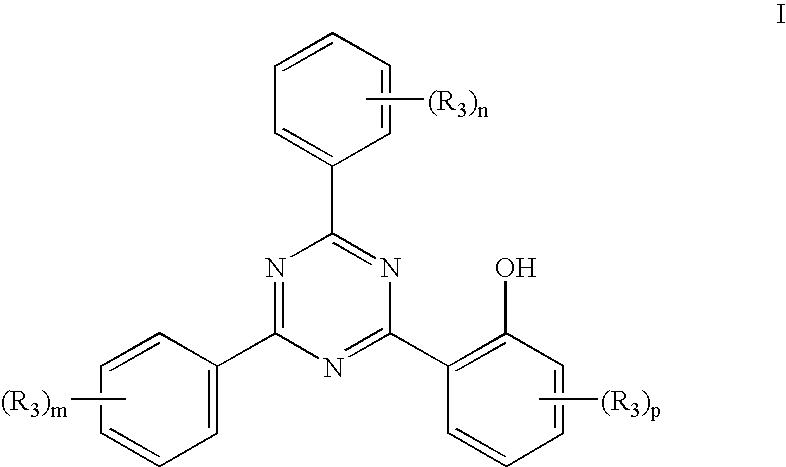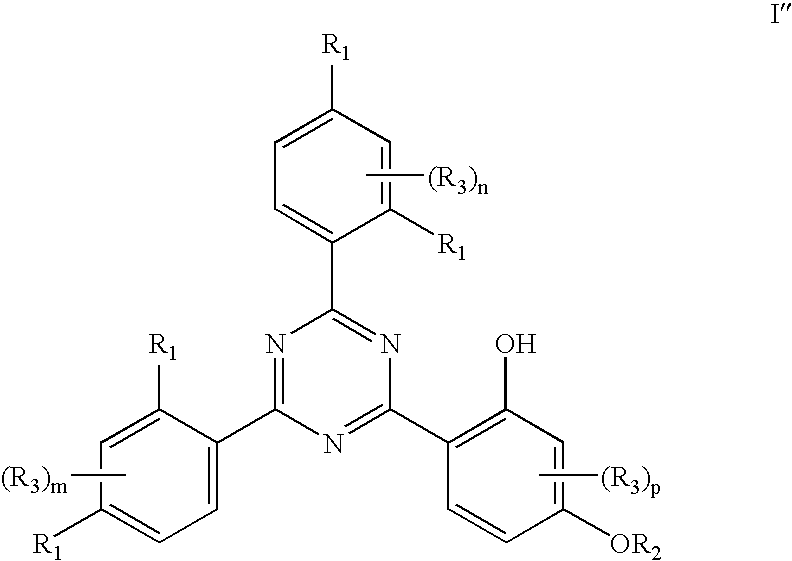Transferable UV protective image overcoat
a technology of protective overcoat and transferable heat, which is applied in the field of heat transferable protective overcoat, can solve the problems of dye degradation or fading with time, and achieve the effect of reducing the amount of uv radiation
- Summary
- Abstract
- Description
- Claims
- Application Information
AI Technical Summary
Benefits of technology
Problems solved by technology
Method used
Image
Examples
example
Control Element C-1
Protection layer donor elements were prepared by coating on the back side of a 6 μm poly(ethylene terephthalate) support:1) a subbing layer of titanium alkoxide, Tyzor TBT®, (DuPont Corp.) (0.13 g / m2) from a n-propyl acetate and n-butyl alcohol solvent mixture (85 / 15), and2) a slipping layer containing an aminopropyl-dimethyl-terminated polydimethylsiloxane, PS513® (United Chemical Technologies) (0.01 g / m2), apoly(vinyl acetal) binder, KS-1, (Sekisui Co.), (0.38 g / m2), p-toluenesulfonic acid (0.0003 g / m2) and candellila wax (0.02 g / m2) coated from a solvent mixture of 3-pentanone, methanol and distilled water (88.7 / 9.0 / 2.3).
On the front side of the element was coated a transferable overcoat layer of poly(vinyl acetal), KS-10, (Sekisui Co.), at a laydown of 0.63 g / m2, colloidal silica, IPA-ST (Nissan Chemical Co.), at a laydown of 0.46 g / m2 and 4 μm divinylbenzene beads at a laydown of 0.11 g / m2. The materials were coated from the solvent 3-pentanone.
Control Elemen...
PUM
| Property | Measurement | Unit |
|---|---|---|
| wt % | aaaaa | aaaaa |
| wavelengths | aaaaa | aaaaa |
| thermal | aaaaa | aaaaa |
Abstract
Description
Claims
Application Information
 Login to View More
Login to View More - R&D
- Intellectual Property
- Life Sciences
- Materials
- Tech Scout
- Unparalleled Data Quality
- Higher Quality Content
- 60% Fewer Hallucinations
Browse by: Latest US Patents, China's latest patents, Technical Efficacy Thesaurus, Application Domain, Technology Topic, Popular Technical Reports.
© 2025 PatSnap. All rights reserved.Legal|Privacy policy|Modern Slavery Act Transparency Statement|Sitemap|About US| Contact US: help@patsnap.com



